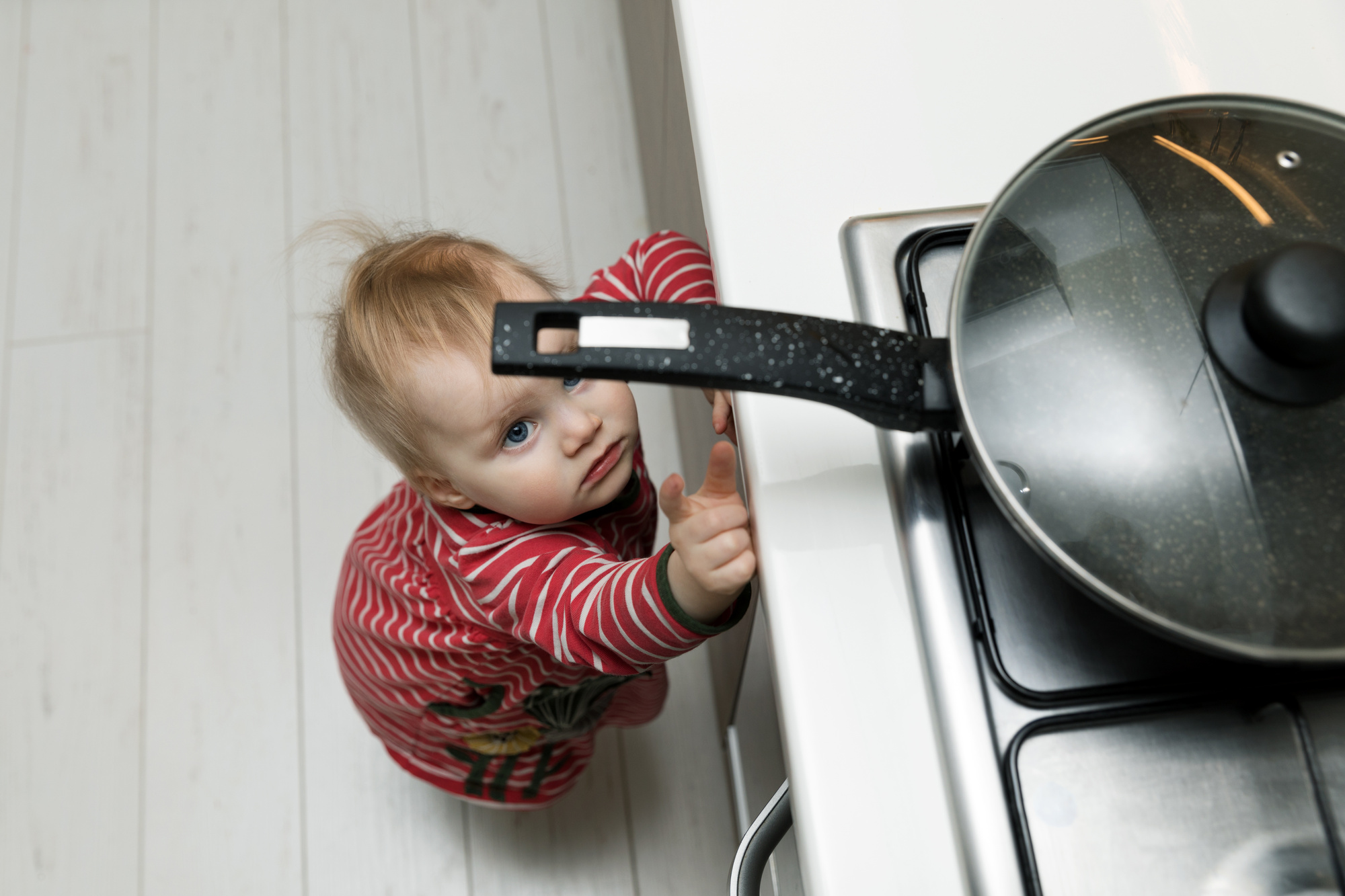Ensuring a safe haven for our children is a fundamental instinct. Every creak of a floorboard or rustle outside can spike a parent’s heart rate. Yet, overprotecting can stifle a child’s sense of exploration and independence.
Child-safe security measures prioritize the unique needs of children, ensuring their environment is both secure and nurturing. These measures go beyond traditional security, considering the curiosity and mobility of young minds.
Common risks in homes include unsecured cabinets and appliances, which can turn everyday objects into hazards. Stairs and windows also pose significant risks, especially for toddlers exploring their surroundings.
As we explore the nuances of child-safe home security, we’ll discover how to protect our families effectively without compromising the warmth and openness of our homes.

Essential Components Of Child-Safe Home Security
Creating a child-safe home involves thoughtful integration of security features. These components protect while respecting a child’s inquisitive nature.
-
Door And Window Locks
For door and window locks, child-proof yet accessible options are key. Locks should be high enough to elude tiny hands but easy for adults to operate in emergencies. Safety latches on windows can prevent accidental falls.
-
Alarm Systems
Alarm systems with child-friendly features offer dual benefits. They alert to potential dangers while being tamper-proof against curious fingers. Customizable codes can be set for different family members.
-
Surveillance Cameras
Surveillance cameras need to balance security with privacy. Strategic placement ensures safety without intruding into personal spaces. It’s vital to choose cameras with secure data storage to protect family privacy.
In designing a child-safe home, every choice reflects a commitment to safety and nurturing. A comprehensive home security systems guide can be instrumental in selecting thoughtful security measures. These measures allow children the freedom to explore safely within the comfort of home.
Creating A Safe Environment
In a child-safe home, distinguishing between safe zones and restricted areas is crucial. Safe zones are areas where children can roam freely, filled with child-friendly furnishings and toys. Restricted areas, like kitchens or tool sheds, should be clearly marked and secured. Using child-proof gates helps maintain these boundaries effectively.
Technology also plays a vital role in monitoring access to different areas of the home. Smart locks and access control systems can restrict or allow entry to specific areas. Motion sensors and smart cameras can notify parents if a child enters a restricted zone, ensuring their safety at all times.
Incorporating Child-Proofing Measures
Child-proofing a home involves using specific tools and gadgets. Corner protectors, cabinet locks, and safety gates are essential. Outlet covers prevent electrical accidents, while furniture anchors secure heavy items. These gadgets are designed to be user-friendly for adults while ensuring children’s safety.
Educating children about these safety features is equally important. Discussions about the purpose of safety gadgets can be engaging and informative. Role-playing scenarios help children understand what to do in case of emergencies. Reinforcing these lessons regularly ensures children remember and respect the safety features.
Balancing Accessibility
Ensuring emergency exits are accessible is a key element in balancing safety with accessibility. These exits should be easy for adults to use, yet secure enough to prevent unsupervised access by children. Clear signs and lights can guide the way during emergencies. Regular drills and checks ensure these exits function properly and are understood by all family members.
Keeping security simple and understandable for children is vital. Using straightforward security measures, like basic locks and alarms, makes it easier for kids to understand and follow safety protocols. Demonstrating how these systems work in a child-friendly manner can be both educational and reassuring. Regular family discussions about safety reinforce these concepts, making children more aware and responsible.
Latest Trends In Child-Safe Security Systems
The latest trends in child-safe security systems are revolutionizing how we protect our homes:
-
Voice-Activated Systems
Parents can activate or modify security settings using voice commands. This is especially useful when hands are full or in emergency situations.
-
GPS Tracking In Kids’ Smartwatches
GPS tracking in children’s smartwatches offers outdoor safety. It allows parents to monitor their child’s location in real-time. Geofencing alerts notify when a child leaves a predefined area.
-
Smart Doorbells With Facial Recognition
Smart doorbells identify known faces and alert about strangers. This feature adds an extra layer of security by monitoring who approaches the house. Parents can also remotely communicate with visitors.
-
Advanced Motion Sensors
These sensors differentiate between adults, children, and pets. They reduce false alarms and improve the accuracy of security alerts. This technology is particularly helpful in homes with small children and pets.
These innovations provide a blend of safety and peace of mind, keeping our homes secure for the youngest members.
Conclusion
Balancing safety and accessibility in a child-safe home is a dynamic and ongoing process. It’s about creating an environment that nurtures a child’s curiosity while ensuring their security. The evolution of home security technology offers parents innovative ways to protect their little ones.
By combining traditional child-proofing measures with advanced security systems, families can enjoy a harmonious blend of safety and freedom. This approach fosters a secure, loving home where children can grow and thrive.
